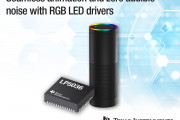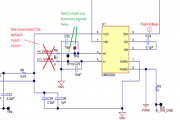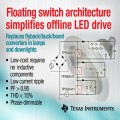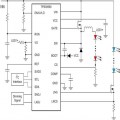 2018-11-29
2018-11-29
Texas Instruments introduced a new family of LED drivers with integrated, independent color mixing, brightness control and a power-saving mode. The new family includes the LP5018, LP5024, LP5030 and LP5036 enable smooth, vivid color and reduce system power consumption.
The devices are the industry's first to offer a 29-kHz dimming frequency, above human-audible range, to help designers of applications that use a human-machine interface, such as portable electronics, building automation and appliances, eliminate the noise typically heard when dimming lights. Additional...
Continue reading →
 2016-03-31
2016-03-31
In my last blog post, I walked you through a hands-on project: dimming a lamp with a gallium nitride (GaN) power stage, a Hercules™ microcontroller and a scroll wheel. I covered setup, design and how to drive the power stage the right way.
Continue reading →
 2013-11-05
2013-11-05
Texas Instruments introduced the industry's first floating switch architecture that simplifies the offline linear drive of LEDs in lamps, downlights and fixtures. The AC switched matrix technique features TI's TPS92411 floating MOSFET switch and is an innovative approach to producing low-ripple LED drive current without magnetic components. The architecture provides excellent compatibility with legacy wall dimmers and delivers high power factor and low total harmonic distortion (THD). For more information, samples and evaluation modules, visit www.ti.com/tps92411-pr.
Continue reading →
 2013-09-16
2013-09-16
Texas Instrument Product Engineer David Zhang shares insights on LED color tuning technology in a recent blog post. As Tim Sullivan indicated in an earlier blog as well, LED lighting is a relatively new technology. Engineers that used to change bulb color through the glass fixture are now finding themselves figuring out how to change or tune lighting color in high-end LED fixtures. One of the easiest ways to do this is through multiple strings of different color LEDs with dimming. I wrote a paper, “Dimming multiple LED strings enables color-tunable luminaires”, on this topic that was published recently in LEDs Magazine. As well, I included a link below to a video demonstration on this topic.
Continue reading →
 2018-11-29
2018-11-29
 2016-03-31
2016-03-31
 2013-11-05
2013-11-05
 2013-09-16
2013-09-16